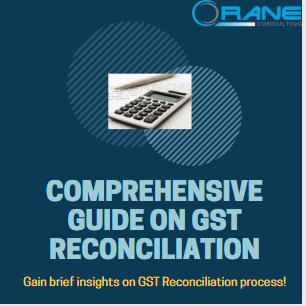What is GST Reconciliation?
The procedure of reconciliation and matching of GST returns is not new for taxpayers as it was prevalent in the previous VAT and excise regime. Before, the matching of data was done between the books of accounts and tax returns which was an easy task. In case of any discrepancy, the authorities would communicate the same to the taxpayer and accordingly further audits and scrutiny would be carried out.
However, under GST, reconciliation has gained much significance as it is associated with ITC claimed by businesses, which is again regularly monitored by the tax authorities. Furthermore, the taxpayer must reconcile their data on a regular basis with the data declared by their supplier.
What is Matching & Reconciliation under GST?
Following Mismatches are often noticed by taking over following Matching and Reconciliation exercises:
- Differences between the amount of credit shown in GSTR- 3B and the GSTR 2A or/and
- Discrepancies between GSTR-3B and GSTR-1 or/and
- Differences in the provisional credit claimed and actual credit that is claimable. This situation arises usually during transition stages.
Why is GST Reconciliation required?
There are several reasons why reconciliation for GST returns data is required by businesses under GST.
1. As per the new proposed model of GST returns by GSTN, taxpayers are going to be ready to claim ITC as long as the invoice is present as a neighborhood of their 2A data or vendor data. due to this, taxpayers will now be got to do a reconciliation wherever the ITC as per their purchase register and 2A data isn’t matching.
2. GST returns are filed monthly or quarterly basis. Finally, after the fiscal year gets over, annual returns must be filed before the 31st December of subsequent FY. this is able to need consolidation of the info reported over the FY. so as to make sure the correctness of the declaration made and to avoid duplications, the taxpayer must reconcile the info, then consolidate the values and make the declaration. Certain deadlines are stipulated within the GST laws for creating amendments to GST returns data or to say ITC.
There can be several causes for mismatches such as:
1. The vendor has declared liability, but credit isn’t availed in GST returns: Any left-out credits should be availed at the sooner of the maturity of September returns or Annual returns.
2. Non-declaration of liability on supplies by the seller, but businesses have availed credit on such procurements within the GST returns: ,.Businesses should follow up with the seller to make sure that the liability is said. Otherwise, risks of such credits being disallowed may arise.
3. Errors within the details furnished: There is often a mismatch within the fields like GSTIN of the supplier/recipient, number and date of the invoice/debit note, etc. Make amendments within the GST returns of the month following the relevant month when mistakes were committed.
Reconciliation under Goods & Service Tax (GST) implies to matching the info filled by the supplier thereto of the recipients. it’s made for collecting or recording all the transactions done during a specific period. The reconciliation process is formulated and strengthened to its unevolved, non-effective self; it’s been before VAT and excise came in action. With the reconciliation process, you’ll make sure that no sales or purchase is omitted or wrongly reported within the GST returns.





